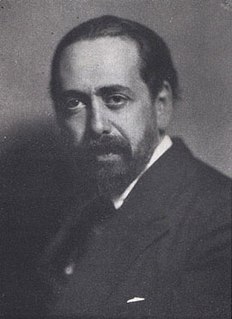
Jorge Francisco Isidoro Luis Borges Acevedo was an Argentine short-story writer, essayist, poet and translator, and a key figure in Spanish-language and universal literature. His best-known books, Ficciones (Fictions) and El Aleph, published in the 1940s, are compilations of short stories interconnected by common themes, including dreams, labyrinths, philosophy, libraries, mirrors, fictional writers, and mythology. Borges' works have contributed to philosophical literature and the fantasy genre, and have been considered by some critics to mark the beginning of the magic realist movement in 20th century Latin American literature. His late poems converse with such cultural figures as Spinoza, Camões, and Virgil.
Carlos Mastronardi was an Argentine journalist, poet, and translator. His works included Luz de provincia, Tierra amanecida (1926), Conocimiento de la noche (1937), and Tratado de la pena. His non-fiction Valéry o la infinitud del método won the Buenos Aires Municipal Prize for Literature (1955). Other important works of non-fiction included Formas de la realidad nacional and Memorias de un Provinciano. Some of his journalism was published posthumously as Cuadernos de vivir y pensar.

Florida Street is a popular shopping street in Downtown Buenos Aires, Argentina. A pedestrian street since 1971, some stretches have been pedestrianized since 1913.

Norah Lange was an Argentine author, associated with the Buenos Aires avant garde of the 1920s and 1930s.

Leonor Fanny "Norah" Borges Acevedo, was a visual artist and art critic, member of the Florida group, and sister of the Argentine writer Jorge Luis Borges.
Argentine literature, i.e. the set of literary works produced by writers who originated from Argentina, is one of the most prolific, relevant and influential in the whole Spanish speaking world, with renowned writers such as Jorge Luis Borges, Julio Cortázar, Leopoldo Lugones and Ernesto Sabato.
Martín Fierro was an Argentine literary magazine which appeared from February 1924 to 1927. The magazine was founded by Evar Méndez, José B. Cairola, Leónidas Campbell, H. Carambat, Luis L. Franco, Oliverio Girondo, Ernesto Palacio, Pablo Rojas Paz, and Gastón O. Talamón, and reached a circulation of 20,000. Its headquarters was in Buenos Aires.

Macedonio Fernández was an Argentine writer, humorist and philosopher. His writings included novels, stories, poetry, journalism, and works not easily classified. He was a mentor to Jorge Luis Borges and other avant-garde Argentine writers. Seventeen years of his correspondence with Borges was published in 2000. His published poetry includes "Creía yo".

Emilio Pettoruti (1892–1971) was an Argentine painter, who caused a scandal with his avant-garde cubist exhibition in 1924 in Buenos Aires. At the beginning of the twentieth century, Buenos Aires was a city full of artistic development. Pettoruti's career was thriving during the 1920s when "Argentina witnessed a decade of dynamic artistic activity; it was an era of euphoria, a time when the definition of modernity was developed." While Pettoruti was influenced by Cubism, Futurism, Constructivism, and Abstraction, he did not claim to paint in any of those styles in particular. Exhibiting all over Europe and Argentina, Emilio Pettoruti is remembered as one of the most influential artists in Argentina in the 20th century for his unique style and vision.

Ricardo Güiraldes was an Argentine novelist and poet, one of the most significant Argentine writers of his era, particularly known for his 1926 novel Don Segundo Sombra, set amongst the gauchos.

Oliverio Girondo was an Argentine poet. He was born in Buenos Aires to a relatively wealthy family, enabling him from a young age to travel to Europe, where he studied in both Paris and England. He is perhaps most famous for his participation in the magazines, which ushered in the arrival of ultraism, the first of the vanguardist movements to settle in Argentina.

Don Segundo Sombra is a 1926 novel by Argentine rancher Ricardo Güiraldes. Like José Hernández's poem Martín Fierro, its protagonist is a gaucho. However, unlike Hernandez's poem, Don Segundo Sombra does not romanticize the figure of the gaucho, but simply examines the character as a shadow (sombra) cast across Argentine history. Unlike Martin Fierro, purely an imaginary character, Don Segundo Sombra was loosely inspired by the real life of Segundo Ramírez, a native of the town of San Antonio de Areco in Buenos Aires Province. The life of Don Segundo Sombra made it to the big screen in 1969 in an Argentine production of a film by Manuel Antín.

Susana Calandrelli was an Argentine writer and teacher.

Lito Cruz was a prominent Argentine stage director and motion picture actor.

Argentine painting refers to all the pictorial production done in the territory of Argentina throughout the centuries.
Ernesto Palacio was an Argentine historian and part of a generation of right-wing nationalist intellectuals active from the 1920s. Their ideology is referred to as nacionalismo.
Juan Kurchan was an Argentine architect and designer and a mentor of the Modern Movement in Argentina. He designed a portable seat known as the BKF Chair or butterfly chair. He was part of a group working with Le Corbusier on a plan for redevelopment of the city of Buenos Aires, and later entered the city administration and designed many new buildings there. He later became a director of the National Endowment for the Arts.
Elbio Raúl Lozza was an Argentinian painter, draughtsman, designer, journalist, and theorist who was part of the concrete art movement. He was part of the Asociación Arte Concreto-Invención. He was the founder of the Perceptivist group.

Richmond Tea Room was a tea room and literary café in Buenos Aires, Argentina.












